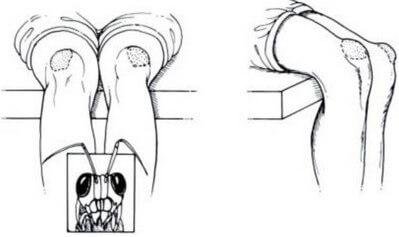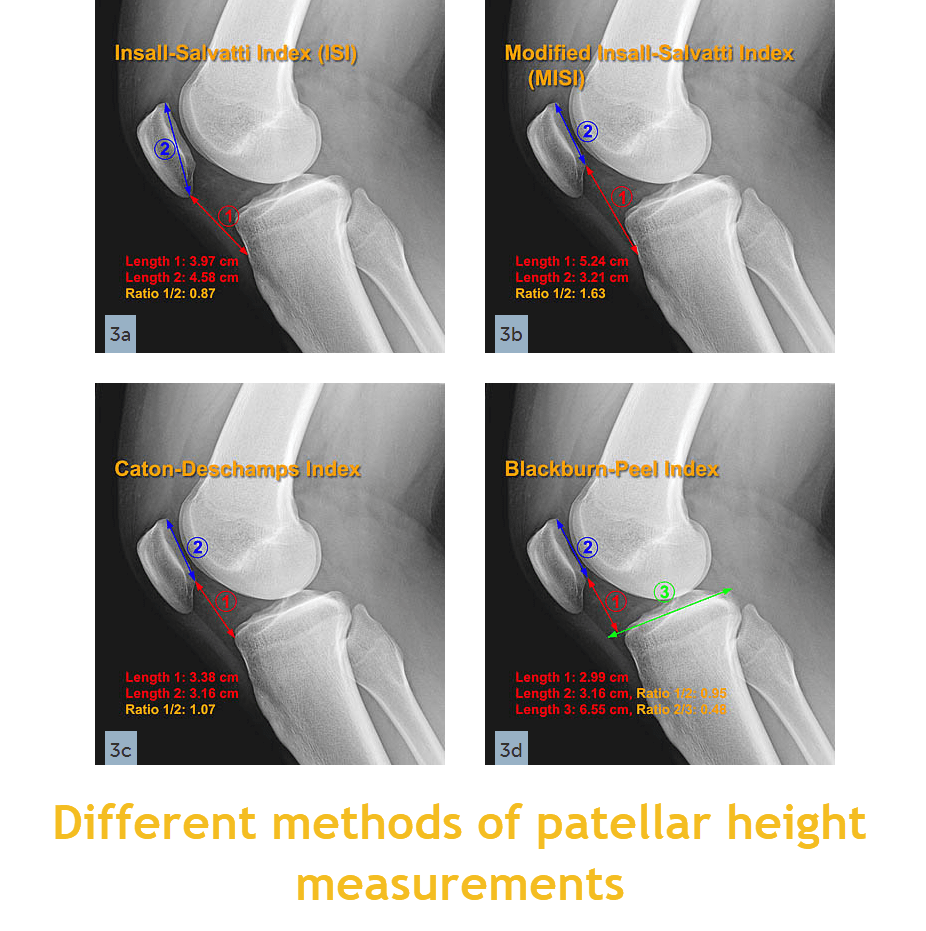What is Patella Alta?
Patella Alta also referred to a high-riding patella. Patella alta is an unusually high patella as relates to the position of an individual’s femur. Patella is also known as the kneecap and sits on thigh bone or femur. Normally kneecap rests in a groove and to allow it function properly, the groove’s cartilage needs to have good contact with kneecap’s cartilage at the back. Patients having patella alta have a high kneecap that isn’t fitting the groove as it should meaning the cartilage tends to wear down faster.1,2


In patella alta, the femoral groove gives only little barrier to keep in place the high-riding patella. If there is a small contraction involving the quadriceps muscles, it makes the patella to pull over the edge and move out of the groove. This can lead to dislocation of the patella. Dislocation of patella has been linked to patellofemoral dysfunction that is often associated with patellofemoral pain. In patella alta, it creates an unstable patella.2
Knee Joint Anatomy
Being a large and complex joint in an individual’s body, the knee joint has 4 bones and a diverse network of muscles and ligaments. The thigh bone also known as the femur, the tibia or shin bone, and the patella or kneecap tend to articulate through patellofemoral and tibiofemoral joints. The articular cartilage covers these three joints and it’s extremely hard but a smooth substance that has the ability to reduce friction forces. The intercondylar groove provides a femur indentation where the patella lies.2
Patella has a triangular shape and it’s a flat bone situated within the front area of a person’s knee joint. It’s the biggest seasmoid bone and the top part faces the direction of the feet while its base faces the torso direction. The two surfaces, which are posterior and anterior surfaces of this bone (patella) connect in the thinner margin in a lateral way. The thicker margin provides a medial cover. The anterior part of patella or kneecap gives a connection of tendons and quadriceps femoris. 3
Functions of Patella
The kneecap or patella provides flexion to joints that helps in mobility and other movements. The articulate cartilage gives the much needed flexion. The extensions of a person’s knee are facilitated or necessitated by quadriceps muscles with the patella acting as the fulcrum. The patella also provides the stability and strength needed for the knee to help with activities like jumping, running, and walking.3
Patella Alta Causes
There isn’t exact cause or etiology for patella alta, however, there are factors that may be associated with the onset of the kneecap condition.2,3
Body structure
People who are tall and thin bodied may be susceptible to having patella alta.
Patellofemoral pain
This can contribute to patella alta. Patellofemoral pain is a syndrome arising because of kneecap contact with a person’s thigh bone.
Knee injury
Patella alta may arise due to an injury occurring in the knee. Strenuous activities involving the knee like sports can make the kneecap to move out of its normal position. Having a sudden change in direction when attempting strenuous activities can make the kneecap to dislocate resulting in patella alta. A kneecap that has been pulled out may lead to patella dislocation that further results into high-riding kneecap.
Knee twisting
You may have patella alta when you twist your knee. Engaging in sporty activities where there is sudden change in direction or frequent change like jerks may contribute to patella alta.
Congenital defects
Knee joint malformations that occur during the embryo development may give rise to patella alta. A person may have abnormally long patella tendons2.
There are conditions that may be linked to patella alta and they are:2
- Spastic cerebral palsy
- Patellofemoral instability
- Sinding Larsen Johanssen disease
- Neuromuscular diseases (poliomyelitis)
- Recurrent patellofemoral dislocation
- Osgood Schlatter disease
- Chondromalacia patella
Patella Alta Symptoms and Signs
A person with patella alta experiences pain within the kneecap or knee joint. Proper diagnosis is needed to ensure that the cause of pain is established. Sometimes, the pain may not be as a result of the high-riding position of patella. Other symptoms are:
- An individual may have chondromalacia patella, which manifests in form of blisters and fissures occurring around the cartilage. These blisters and fissures tend to worsen due to the patella misalignment.
- Dislocated kneecap may occur in people with patella alta. Because the patella bends higher than normal, it may pull out a person’s knee from the normal groove position causing painful dislocation of kneecap or patella.
- Gait instability may occur in persons having patella alta
- Difficult with knee flexion
- Swelling
Diagnosing Patella Alta
Doctors find it difficult to diagnose patella alta. The diagnosis is meant by examining the height and position of kneecap compared to deeper structures of an individual’s knee. Just by touching and looking at the kneecap it’s pretty impossible to tell if it is a case of patella alta.
A physical examination may be done to reproduce symptoms like instability and pain and find the location where pain is occurring from.
A patient feels that they have unstable knee. The knee is also swollen and may be filled with water. The location of water in the person’s knee may appear like a bulging portion as explained using the camel back theory.
A lateral X-ray is done to confirm a diagnosis. The X-ray is carried out with the individual’s knee being bent at 90 degrees. At this point, the height is measured.2
Treatment
Conservative treatment involves restoring knee strength and its stability as well as relieving knee pain. A person need to have rest to allow the patella heal and reduce stress or pressure that may induce pain. Applying ice can help with inflammation and pain.
Surgery may be performed to bring back the patella to its position. Osteotomy is an advanced tibial tuberosity that helps to correct deformities associated with the knee position. Knee braces or splints may be used after surgery to restrict movement of a person’s knees.
Other surgical procedures are:3
- Arthroscopy helps examine knee joint and repair the affected area through small incision
- Patellectomy involves the removal of kneecap
- Lateral release surgery helps to compact tissues that may be loose
- Vastus Medialis Oblique advancement helps adjust the position of patella within the groove. This helps improve movement and stability
- Tibial Tubercle Transfer helps align kneecap position with femur to prevent recurrence of dislocation and compact tissue.
Reference List
- Patella Alta Treatment: What You Can Do When You’re Knee Cap is Too High. Available at https://www.regenexx.com/
- Patella Alta. https://www.physio-pedia.com/Patella_alta
- What is Patella Alta: Causes, Symptoms, Treatment, Diagnosis, Braces. https://www.epainassist.com/joint-pain/knee-pain/what-is-patella-alta
- Patella Alta & Baja – What is the Difference? https://www.braceability.com/blogs/info/patella-alta-baja
- Patella Alta Causes, Presentation and Treatment. https://boneandspine.com/patella-alta/
- https://radiopaedia.org/articles/patella-alta
- http://healthfixit.com/patella-alta/

I really liked this article, can you tell me if it’s normal for your knees to be creaking when you squat? Could it be a sign that requires treatment?